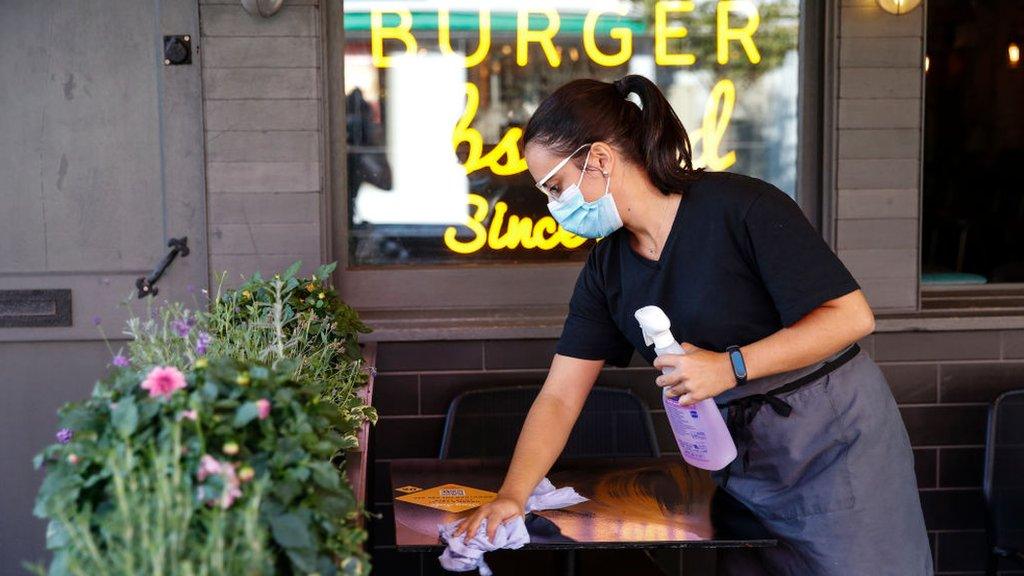Covid: One in five firms plan job cuts as furlough tapers - survey
- Published

One in five firms plan on letting staff go in response to Sunday's furlough policy change, which will see employers contribute more, a survey has found.
The British Chamber of Commerce said extra training was needed to deal with thousands of redundancies predicted.
From Sunday, government payments reduce to 60% towards salaries, with employers paying 20%.
The government said the approach was "right" and meant "we can focus support elsewhere" as the economy recovers.
According to the most recent figures up to 30 June, about 1.9m workers were on furlough, down from a peak of 5.1m in January.
The government said 11.6 million jobs have been supported since the Job Retention Scheme launched in April 2020.
The scheme is due to close at the end of September.
It meant that staff whose jobs were put on hold during the coronavirus pandemic were guaranteed 80% of their salaries - to a limit - from the government.
As the scheme winds down, the support is slowly being made less generous. Since 1 July, employers have been asked to contribute 10% towards the wages of furloughed workers for hours their staff do not work.
That amount has now risen to 20% during August and September.
The British Chamber of Commerce surveyed 250 businesses, with 18% telling the chamber they were likely to make staff redundant in response to the change to furlough.
A quarter said they would aim to reduce hours or move staff to part-time working patterns.
Jane Gratton, head of people policy at the chamber, said the change "will likely result in many thousands of people being released back into the labour market, as employers who are still struggling to recover from the recession are forced to make redundancies and cuts to working hours".
She said it was "crucial" that employers and the government give returning furloughed workers the support and training they need "to be re-engaged and productive".
'Concerning'
Hannah Slaughter, an economist from the Resolution Foundation, told the BBC that over the majority of the pandemic, the highest rates of furlough was among the under 25s, but the most recent data it was the over 60s who were more likely to be furloughed.
"That's concerning because we are likely to see a rise in unemployment when the Job Retention Scheme ends in the autumn and any workers who are left on furlough are more likely to become unemployed," she said.
She said older people were more likely to leave the workforce when they lose their jobs and those who return in a new job were "more likely to face a pay penalty" relative to younger workers.
The government said its employment programmes were working and had supported workers' livelihoods through the pandemic.
"We've always been clear that it's not possible to save every job, but our Plan for Jobs is helping people of all ages find the skills they need to get back into work," a spokesman said.
Related topics
- Published29 July 2021
